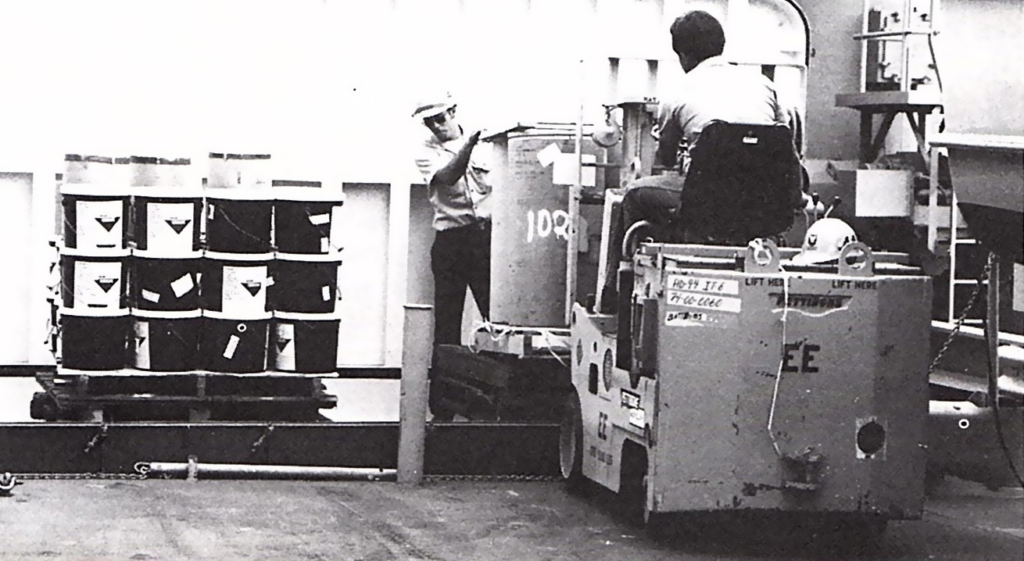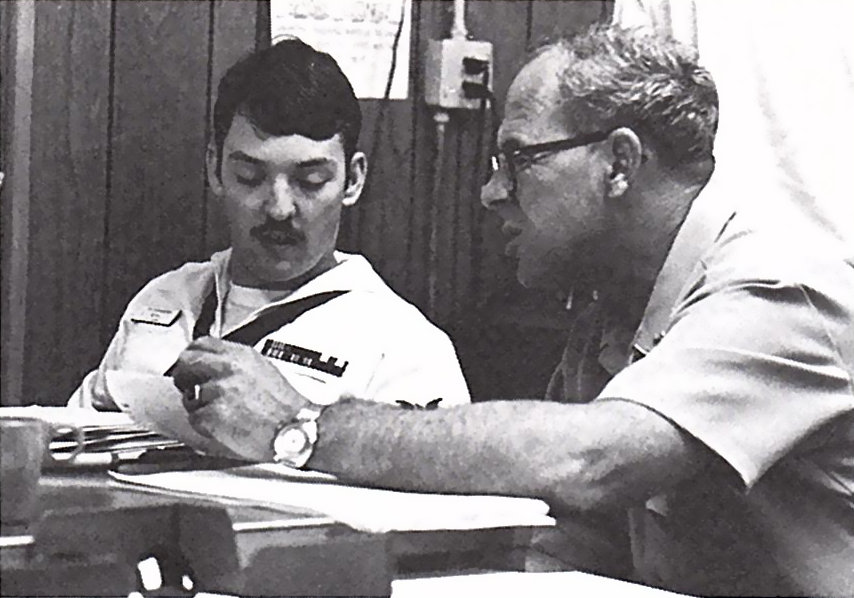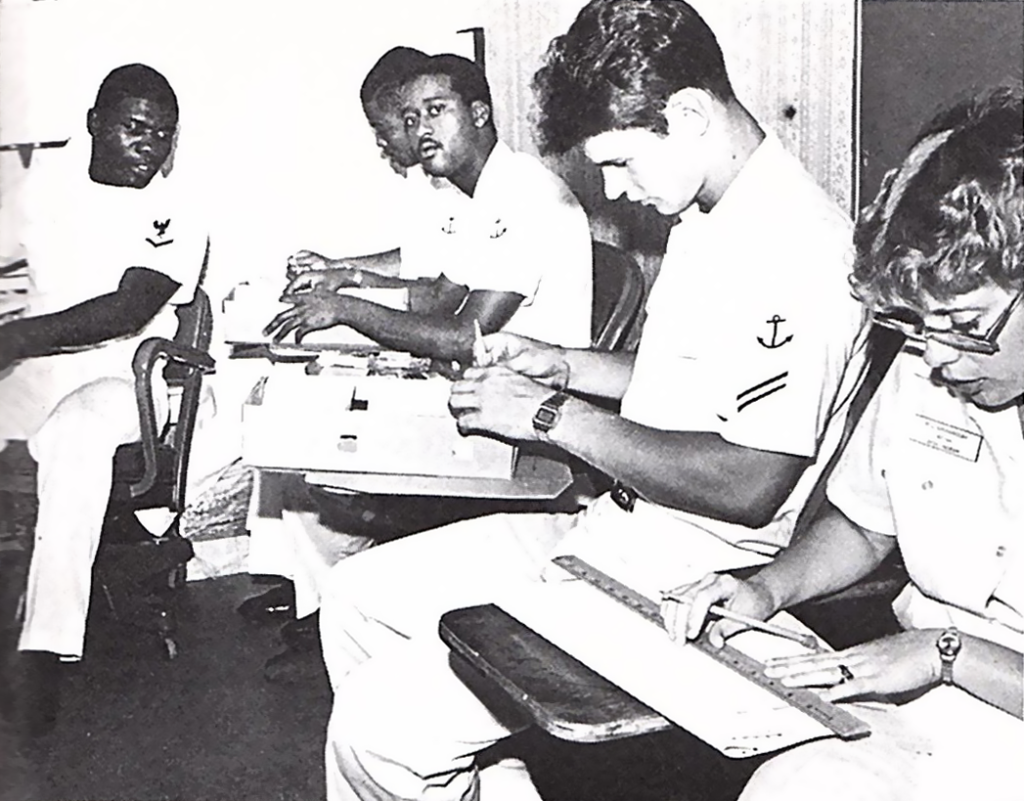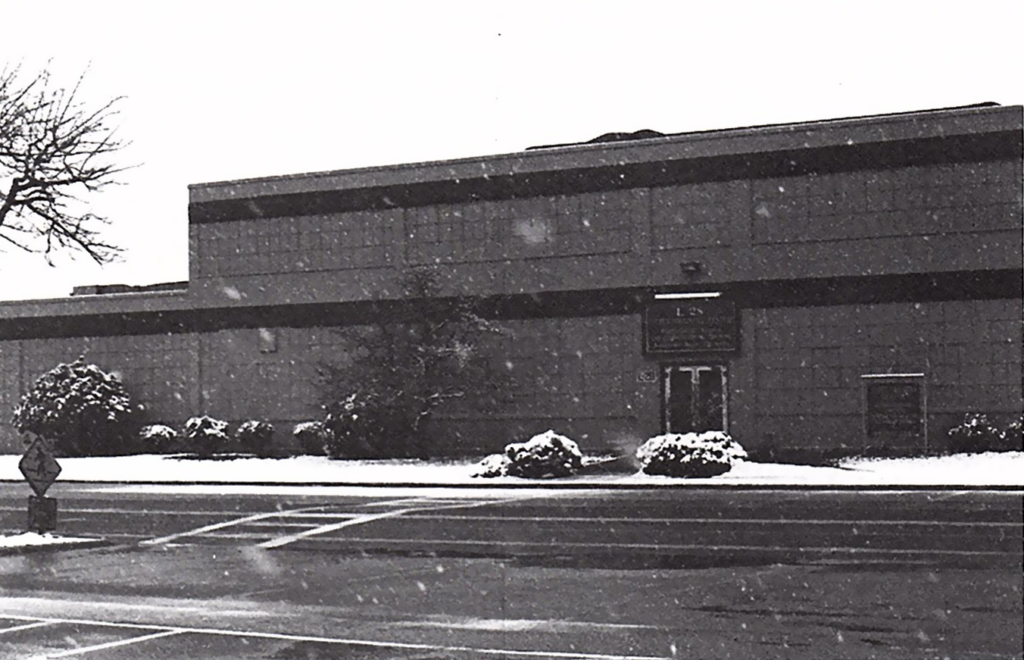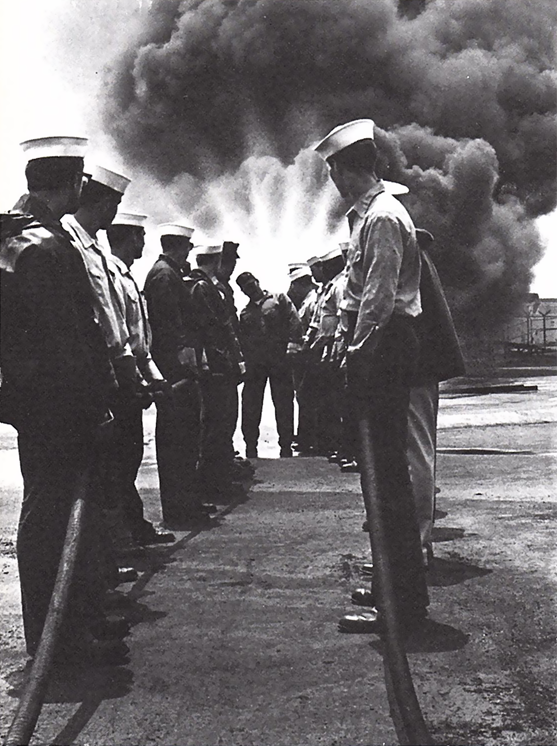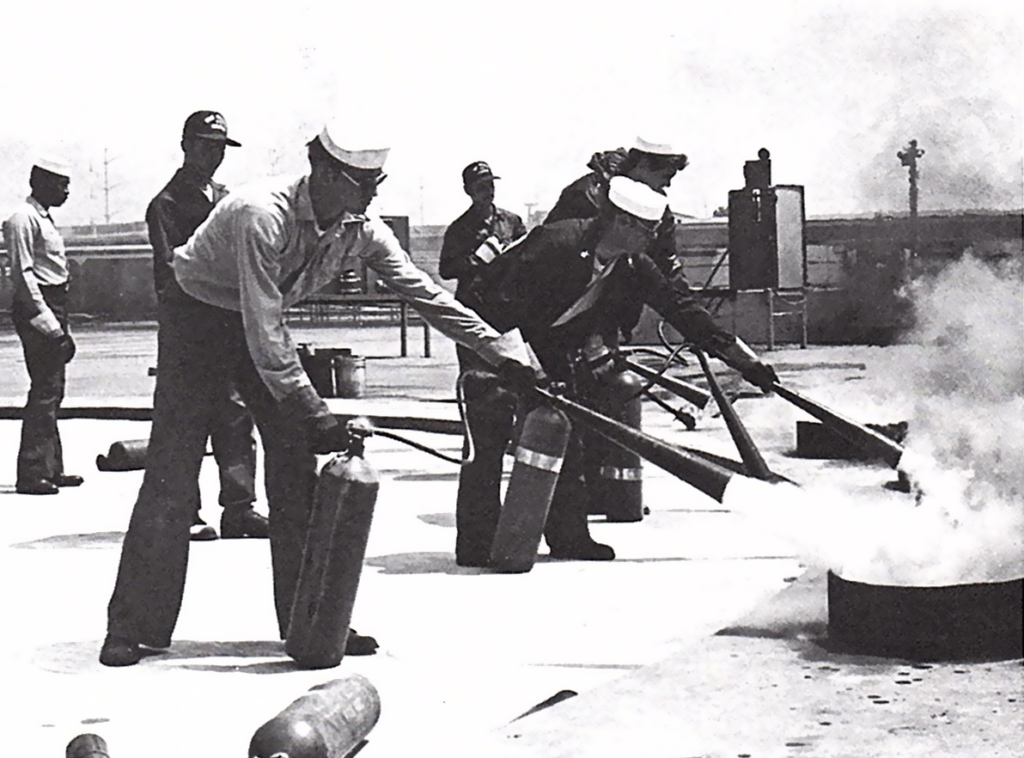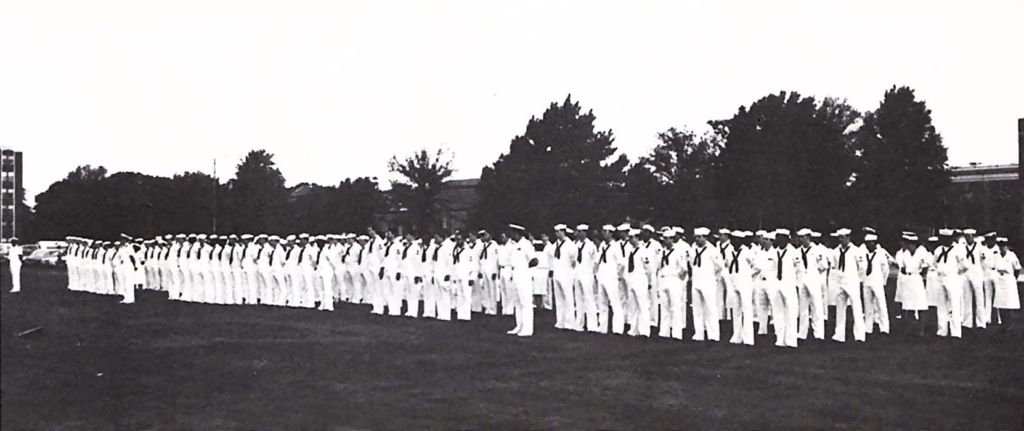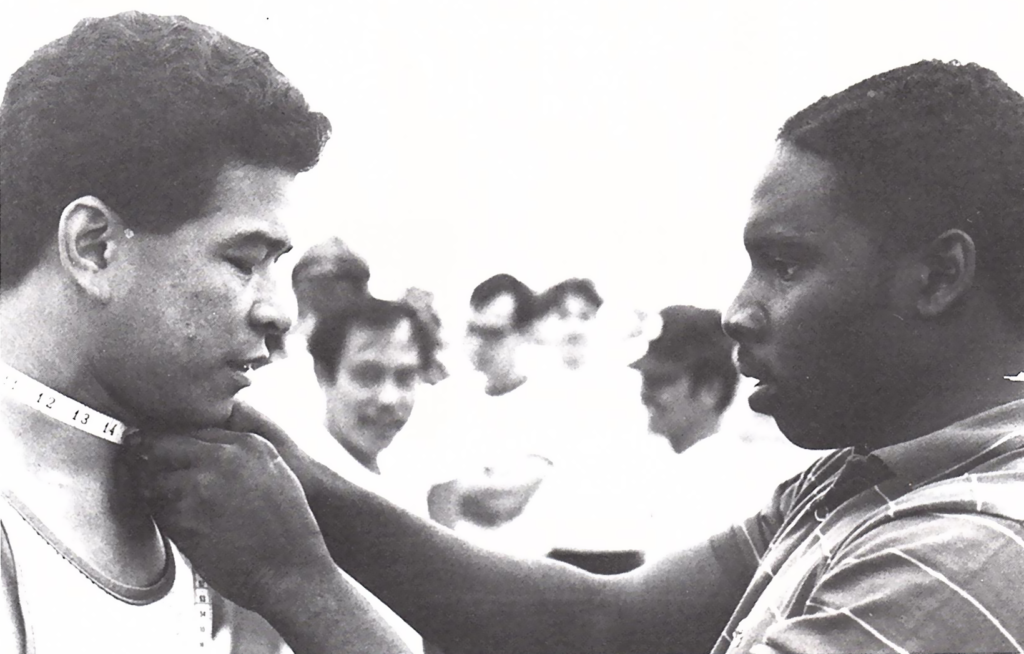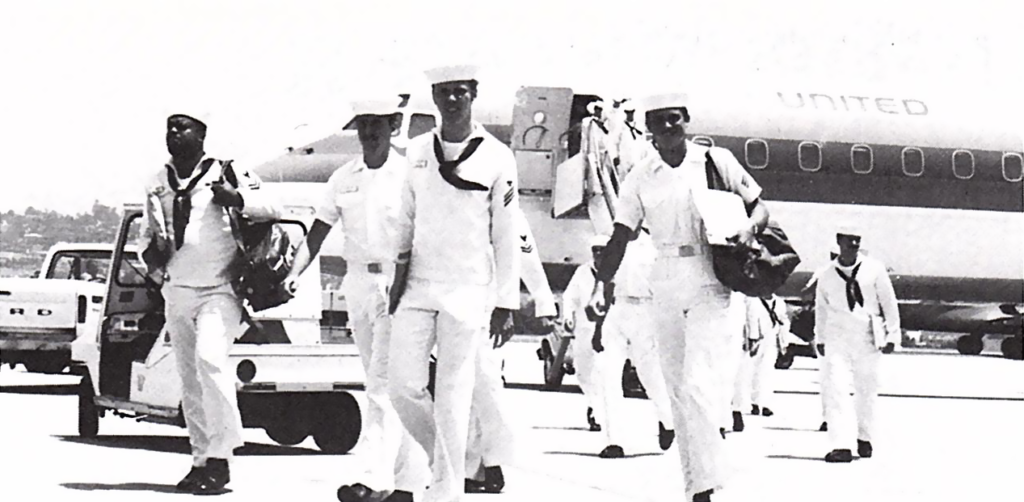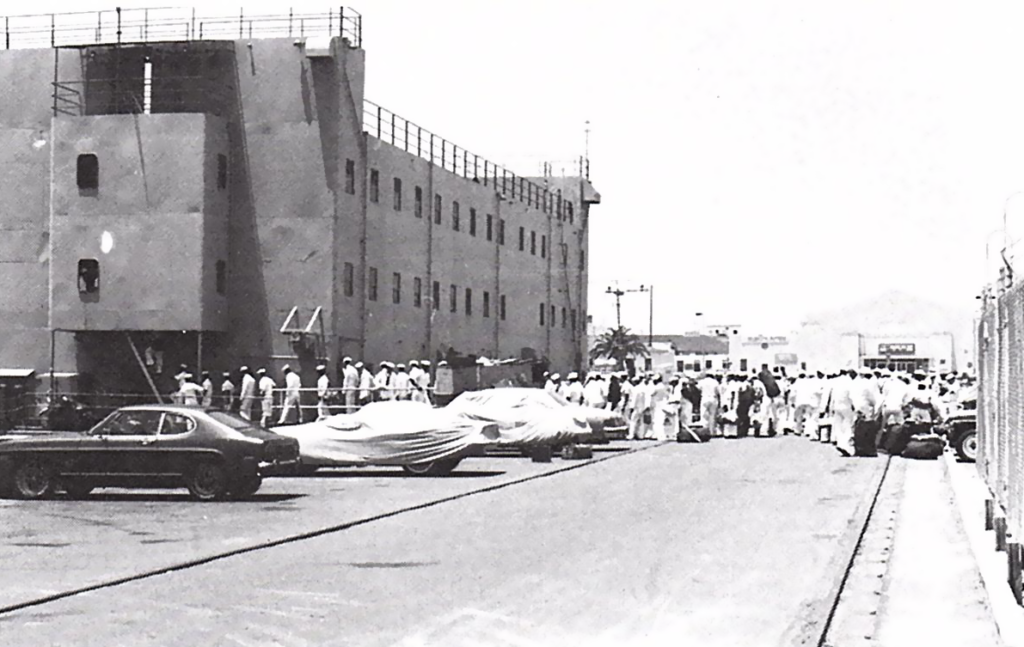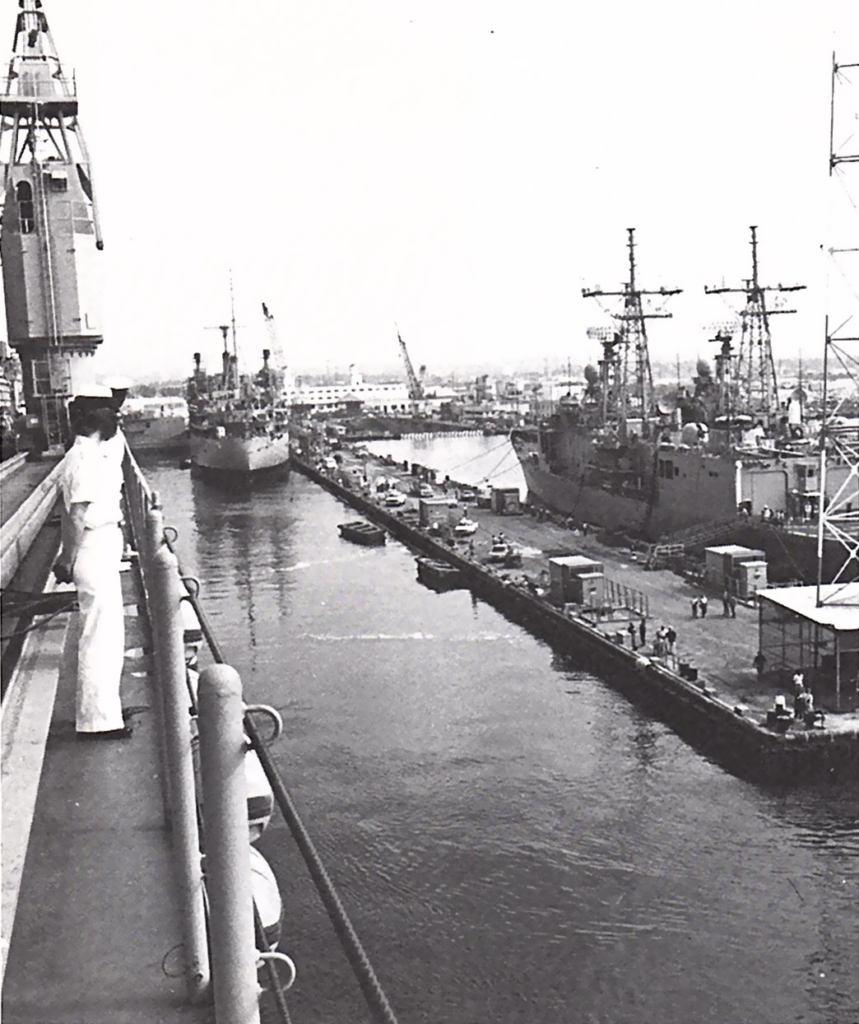PCU SHENANDOAH| Precommissioning
The Precommissioning Unit
SHENANDOAH’s Precommissioning Unit (PCU) was initiated during the Decommissioning and transfer of the USS Piedmont (AD 17) on 2 November 1982. PIEDMONT’s Commanding Officer, Captain Thomas M. McNicholas, Jr. and crew remained on PIEDMONT for many weeks as Turkish sailors came to Norfolk Naval Base for training on the ship and her systems. PIEDMONT was then renamed “TCC Derya (A-576)”, and her new crew sailed the ship to her new home in Turkey.
Captain McNicholas was then issued new orders as Prospective Commanding Officer (PCO) of Destroyer Tender (AD 44). Over 100 crew from the PIEDMONT were selected as the PCO’s staff, and were slated to join the PCU SHENANDOAH unit. However, of the 100 crew selected by the Captain, only 28 of the selectees were approved by Command.
Their first duty: invade Naval Base Norfolk and begin establishing the unit. Next, set up a supply headquarters in San Diego for Destroyer Tender (AD 44).
Supply Mission
In January, 1983, the Supply Department moved into a warehouse in San Diego, CA, and began its organization of equipment and supplies destined to be brought aboard SHENANDOAH. Over 2,000 pallets and triwals would eventually be moved from this warehouse and loaded aboard the ship
L-28 PCU Shenandoah Unit Headquarters
While SHENANDOAH was completing its outfitting in San Diego, most of the crew were in Norfolk, VA for training. FTC’s Building L-28 was the headquarters for the SHENANDOAH Precommissioning unit.
SHENANDOAH sailors attended a wide variety of Navy schools, including firefighting, damage control “Buttercup”, and leadership (LMET).
“School of the Ship” classes taught by senior petty officers prepared new crew members for operating SHENANDOAH and her extensive equipment and machinery.
SHIP’S FIRST I.M.A.V.
In addition to continued in-rate training, PCU SHENANDOAH’s first Intermediate Maintenance Availability (IMAV) took place; without the ship.
Led by Chiefs HTC Kebert and BMC Horn, three Petty Officers and seven SHENANDOAH junior enlisted crew mustered at the Naval Air Station’s Pistol Range to assist with a complete renovation. The crew demolished the 25-year old, 12′ tall X 25 yard-long wooden ricochet bulkhead, reconstructed a new bulkhead, and rebuilt the firing stands.
One of SHENANDOAH’s crew remained behind to paint a 12′ tall X 25-yard-long Gunner’s Mate mural on the range’s opposing cinder block bulkhead. Once complete, NAS personnel proudly displayed the new Pistol Range during a reopening ceremony.
SHENANDOAH’s Commanding Officer receives Letter of Appreciation for the Command’s first I.M.A.V.
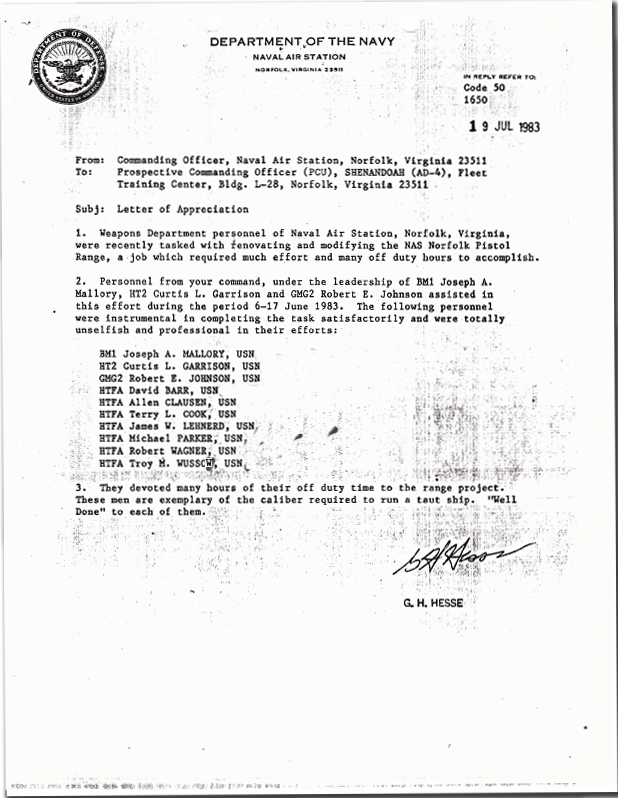
PRECOM meant hard work preparing a new ship for commissioning and a new crew to man her, but there was time for fun, too. There were family picnics in Norfolk and San Diego, and SHENANDOAH DAY at Busch Gardens. Family predeployment briefs were held as well.
Many crew members competed in various sports. SHENANDOAH’s drive to be #1 will be remembered on both coasts.
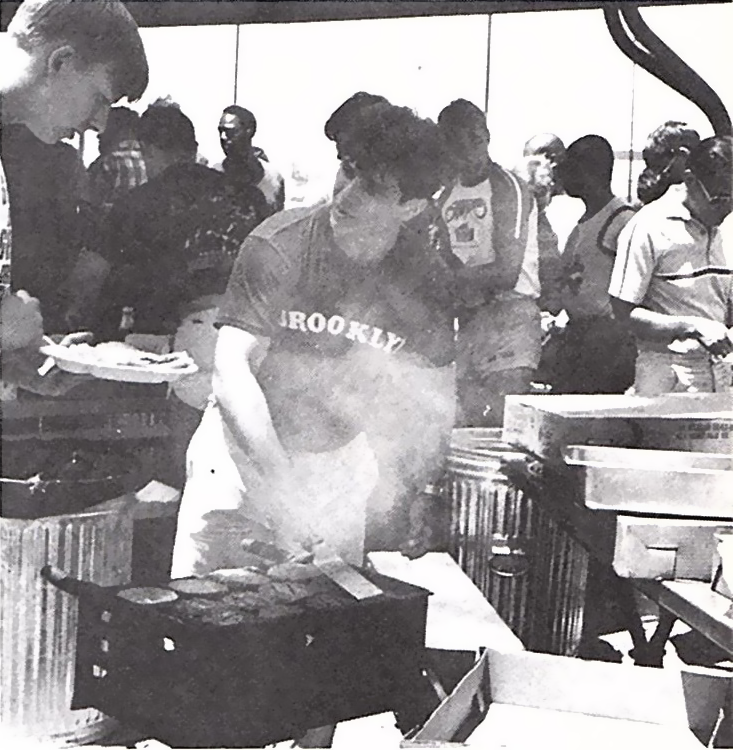
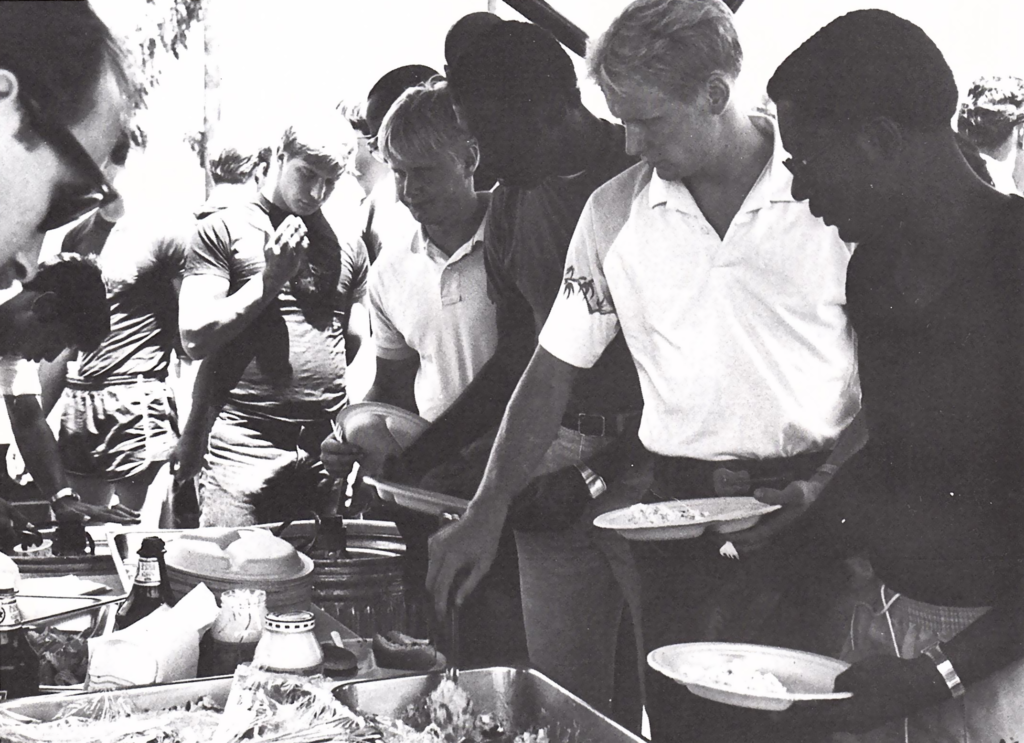


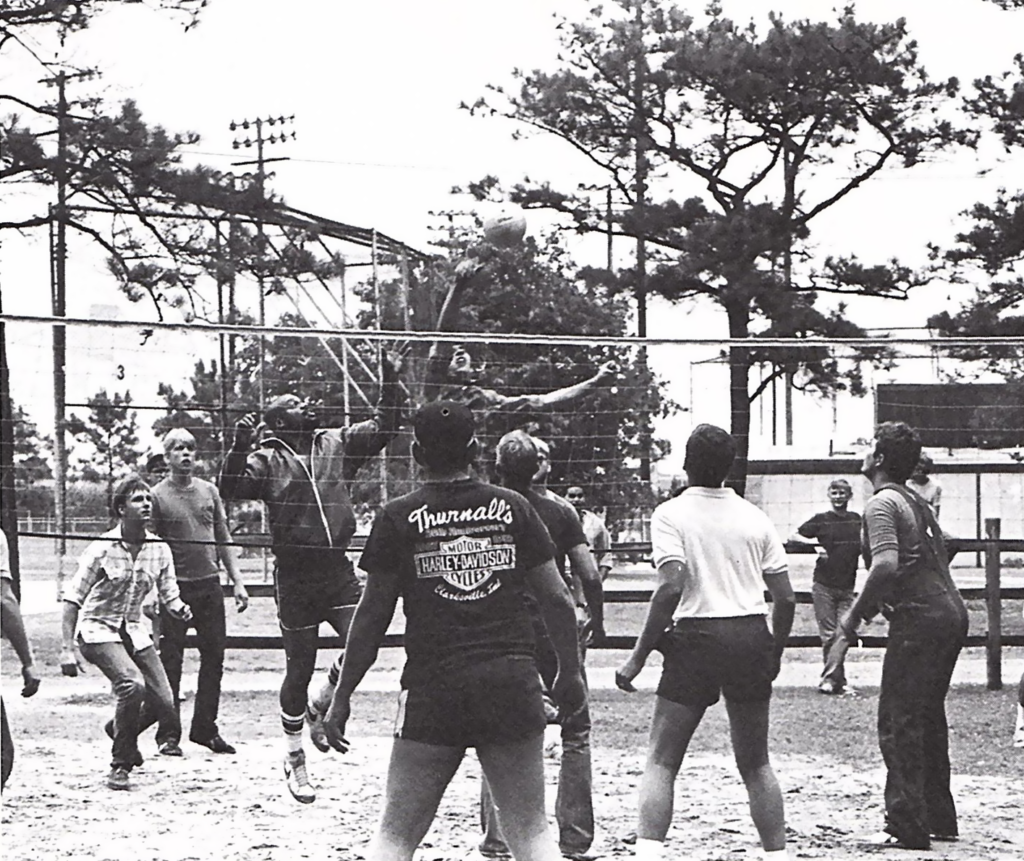

West Coast Championship Football Team
Bellys & Beards, Both Must Go
Bellys First…
Medical personnel take body mass index measurements, and then the crew participate in the U.S. Navy’s physical fitness readiness examinations.
Habitability Team
(Hab Team)
The pace picked up in July when the 200 habitability team members reported to the ship.
The first duty assignment for the Hab Team: rehabilitate the vacant Berthing Barge.
Next duty assignment, board (AD 44) for the first time.

The Hab Team prepared messing and berthing spaces for the rest of the crew. However, they first needed to learn their way around a brand new ship. Welcome Aboard booklets were provided, which included naval architectural deck plans containing compartmental identifications. Compartmental identification, along with basic seamanship, made it easy for the crew to learn their way around and perform their duties quickly. Click below to view the plans.
Following delivery of the cleaning gear, essential equipment and other habitability items required to provide berthing and to open food service, ship’s store, disbursing and laundry operations were brought aboard. Over 200 pallets of initial allowance provisions were on-loaded to establish an endurance load sufficient to feed a crew of more than 1,300.
PCU Shenandoah’s Habitability Team receives letter of appreciation from the Commanding Officer for a job well done, ahead of schedule, and exceeding criteria during the ship’s first major inspection.

SHENANDOAH’s First U.S. Naval Berth
A handful of the crew were ordered to board SHENANDOAH while she was still berthed at NASSCO in order to maintain the required watches. The official approval was issued from COMNAVSERVGRP TWO on 10 August 1983.
SHENANDOAH was ready to depart her civilian berth at NASSCO, and join the fleet pier side, at her first U.S. Navy berth; Naval Base San Diego. A day heavily anticipated was upon the crew, and as one of the last pallets is being loaded at NASSCO, crew were preparing to move her.

Several crew assisted in ship’s movement, a few manned the rails, while the rest of the crew waited eagerly pier-side as the day-long event unfolded.
Connecting pier side services and bringing the ship on-line took most of the evening, and into the night. The crew would have to sleep on the berthing barge or hotel room one last time.
The following morning, the crew packed their sea bags and mustered as ship’s company at SHENANDOAH’s brow for the first time.
The crew’s next assignment: prepare for the Commissioning Ceremony.



